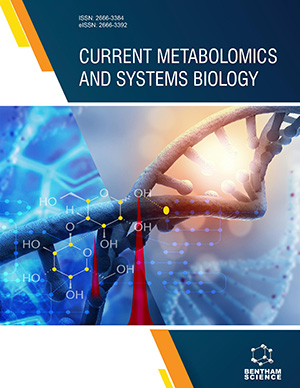Abstract
With the increasing aging of the world’s population, a detailed study of the characteristics of aging, and the pathologies related to this process, are crucial to the development of targeted anti-aging therapies. Therefore, there are several study models for the study of aging, from computational models to animals or even to cell cultures. The latter have shown high potential for aging studies as they are easier to handle, cheaper, do not require the same level of ethical consideration required for animal and human studies, and present little biological heterogeneity when grown under the same conditions and in the same context population. For aging studies, these characteristics are a great advantage since cells have a considerable variety of morphologic characteristics and markers that can be studied. Thus, the aim of this review is to offer an overview of the models used in studies of aging, with a focus on cell culture models, presenting the advantages and disadvantages of cell culture in the study of aging, of what information can we extract of these studies and how cell studies can be compared with the other models.
Keywords: Cell culture, aging, in vitro models of aging, cellular models of aging, anti-aging therapies, aging studies.
[http://dx.doi.org/10.1042/BSR20160177] [PMID: 28096317]
[http://dx.doi.org/10.1155/2012/616128] [PMID: 23320129]
[http://dx.doi.org/10.1146/annurev-animal-022114-110829] [PMID: 25689319]
[http://dx.doi.org/10.1016/j.cell.2013.05.039] [PMID: 23746838]
[http://dx.doi.org/10.1161/CIRCRESAHA.118.312204] [PMID: 30355076]
[http://dx.doi.org/10.1056/NEJMra0804615] [PMID: 19812404]
[http://dx.doi.org/10.1002/path.2999] [PMID: 21953297]
[http://dx.doi.org/10.1016/j.arr.2012.02.001] [PMID: 22353384]
[http://dx.doi.org/10.1038/nature10760] [PMID: 22258607]
[http://dx.doi.org/10.1038/nrm3439] [PMID: 22992591]
[http://dx.doi.org/10.1038/nm1006-1133] [PMID: 17024208]
[http://dx.doi.org/10.1146/annurev.genet.41.110306.130350] [PMID: 18680434]
[http://dx.doi.org/10.1016/0014-4827(61)90192-6] [PMID: 13905658]
[http://dx.doi.org/10.1016/0531-5565(96)00005-8] [PMID: 9415101]
[http://dx.doi.org/10.1038/ncb2466] [PMID: 22426077]
[http://dx.doi.org/10.1016/j.tcb.2011.11.001] [PMID: 22177962]
[http://dx.doi.org/10.1016/j.molcel.2016.05.013] [PMID: 27259204]
[http://dx.doi.org/10.1016/j.cell.2010.07.020] [PMID: 20723760]
[http://dx.doi.org/10.2174/1566524018666180907162955] [PMID: 30198430]
[http://dx.doi.org/10.1016/j.bbamcr.2017.05.007] [PMID: 28499917]
[http://dx.doi.org/10.1016/j.arr.2010.02.001] [PMID: 20152936]
[http://dx.doi.org/10.2337/db11-1300] [PMID: 22618766]
[http://dx.doi.org/10.1016/j.molcel.2016.01.028] [PMID: 26942670]
[http://dx.doi.org/10.1126/science.aaf2693] [PMID: 27127236]
[http://dx.doi.org/10.1152/physrev.00013.2006] [PMID: 17237344]
[http://dx.doi.org/10.1126/science.1201940] [PMID: 21868666]
[http://dx.doi.org/10.1016/j.cmet.2015.11.011] [PMID: 26686024]
[http://dx.doi.org/10.1101/gad.1971610] [PMID: 21078816]
[http://dx.doi.org/10.1038/nrm3823] [PMID: 24954210]
[http://dx.doi.org/10.1146/annurev-physiol-030212-183653] [PMID: 23140366]
[http://dx.doi.org/10.1038/nature05862] [PMID: 17554309]
[http://dx.doi.org/10.1038/nature05159] [PMID: 16957735]
[http://dx.doi.org/10.1038/nature05091] [PMID: 16957738]
[http://dx.doi.org/10.1016/j.exger.2006.09.008] [PMID: 17092679]
[http://dx.doi.org/10.4161/cc.20437] [PMID: 22617385]
[http://dx.doi.org/10.1016/j.febslet.2010.07.042] [PMID: 20674573]
[http://dx.doi.org/10.1038/nrm2234] [PMID: 17684529]
[http://dx.doi.org/10.1038/nature12143] [PMID: 23636330]
[http://dx.doi.org/10.1016/S0531-5565(00)00230-8] [PMID: 11295503]
[http://dx.doi.org/10.1084/jem.15.5.516] [PMID: 19867545]
[http://dx.doi.org/10.3389/fmed.2018.00104] [PMID: 29719834]
[PMID: 25525610]
[http://dx.doi.org/10.1016/S0074-7696(08)62320-7]
[PMID: 2100251]
[PMID: 6140294]
[http://dx.doi.org/10.1007/978-1-62703-556-9_1] [PMID: 23929093]
[http://dx.doi.org/10.1152/physrev.1993.73.3.617] [PMID: 8332640]
[http://dx.doi.org/10.1016/j.mad.2004.07.010] [PMID: 15541776]
[http://dx.doi.org/10.1016/0531-5565(88)90032-0] [PMID: 3197781]
[http://dx.doi.org/10.1016/j.devcel.2004.10.019] [PMID: 15621527]
[http://dx.doi.org/10.1038/embor.2009.22] [PMID: 19218920]
[http://dx.doi.org/10.1016/S0021-9258(17)46787-1] [PMID: 7688732]
[http://dx.doi.org/10.1002/jcp.1041600305] [PMID: 8077280]
[http://dx.doi.org/10.1126/science.2104680] [PMID: 2104680]
[http://dx.doi.org/10.1016/j.cger.2010.08.006] [PMID: 21093720]
[http://dx.doi.org/10.1159/000364928] [PMID: 25341511]
[http://dx.doi.org/10.4172/jcsb.1000122]
[http://dx.doi.org/10.1007/s11538-014-9952-8] [PMID: 24771273]
[http://dx.doi.org/10.1007/s00285-013-0678-2] [PMID: 23620229]
[http://dx.doi.org/10.1046/j.1474-9728.2003.00050.x] [PMID: 12882407]
[http://dx.doi.org/10.1016/j.biosystems.2007.10.003] [PMID: 18063293]
[http://dx.doi.org/10.1006/jtbi.1994.1089] [PMID: 8022192]
[http://dx.doi.org/10.1111/j.1474-9726.2005.00169.x] [PMID: 16164426]
[http://dx.doi.org/10.1371/journal.pone.0076230] [PMID: 24146842]
[http://dx.doi.org/10.1371/journal.pcbi.1002576] [PMID: 22761564]
[http://dx.doi.org/10.1016/j.bbabio.2015.04.005] [PMID: 25868872]
[http://dx.doi.org/10.1038/msb.2010.5] [PMID: 20160708]
[http://dx.doi.org/10.1371/journal.pcbi.1004246] [PMID: 26020242]
[http://dx.doi.org/10.1186/s12918-016-0293-0] [PMID: 27526774]
[http://dx.doi.org/10.1074/jbc.M112.432062] [PMID: 23400783]
[http://dx.doi.org/10.1186/1752-0509-7-41] [PMID: 23705851]
[http://dx.doi.org/10.1093/nar/gkt1235] [PMID: 24288373]
[PMID: 18381800]
[http://dx.doi.org/10.1111/j.1474-9726.2011.00713.x] [PMID: 21501374]
[http://dx.doi.org/10.1534/genetics.111.130450] [PMID: 21750263]
[http://dx.doi.org/10.1016/j.cell.2010.09.013] [PMID: 20946987]
[http://dx.doi.org/10.1111/j.1474-9726.2008.00433.x] [PMID: 18778409]
[http://dx.doi.org/10.1016/j.exger.2010.11.003] [PMID: 21111799]
[http://dx.doi.org/10.1016/j.devcel.2011.05.011] [PMID: 21664581]
[http://dx.doi.org/10.1016/0047-6374(81)90084-1] [PMID: 7311623]
[http://dx.doi.org/10.1093/ilar.52.1.41] [PMID: 21411857]
[http://dx.doi.org/10.1016/j.celrep.2014.12.008] [PMID: 25565328]
[http://dx.doi.org/10.1136/bmj.2.3742.583] [PMID: 20777068]
[http://dx.doi.org/10.1159/000211216] [PMID: 14105125]
[http://dx.doi.org/10.1016/j.cell.2006.08.052] [PMID: 17081981]
[http://dx.doi.org/10.1111/j.1939-1676.2011.00838.x] [PMID: 22111652]
[http://dx.doi.org/10.1038/npg.els.0003960]
[http://dx.doi.org/10.1111/1523-1747.ep12532753] [PMID: 448173]
[http://dx.doi.org/10.1073/pnas.73.10.3584] [PMID: 1068470]
[http://dx.doi.org/10.1038/266724a0] [PMID: 876351]
[http://dx.doi.org/10.1007/BF02832788] [PMID: 1244326]
[http://dx.doi.org/10.1016/S0531-5565(00)00167-4] [PMID: 11053664]
[http://dx.doi.org/10.1016/S0891-5849(99)00249-X] [PMID: 10699747]
[http://dx.doi.org/10.1016/S0531-5565(02)00143-2] [PMID: 12470831]
[http://dx.doi.org/10.1093/carcin/21.12.2203] [PMID: 11133809]
[http://dx.doi.org/10.1093/geronj/34.2.170] [PMID: 438470]
[PMID: 5431223]
[http://dx.doi.org/10.1002/elps.201200605] [PMID: 23436493]
[http://dx.doi.org/10.1038/cr.2011.177] [PMID: 22064701]
[http://dx.doi.org/10.1016/j.ymben.2009.11.001] [PMID: 19914390]
[http://dx.doi.org/10.1186/1752-0509-5-139] [PMID: 21880148]
[http://dx.doi.org/10.1038/nature16932] [PMID: 26840489]
[http://dx.doi.org/10.1126/science.aaf6659] [PMID: 27789842]
[http://dx.doi.org/10.1038/nm.4010] [PMID: 26657143]
[http://dx.doi.org/10.1196/annals.1404.008] [PMID: 18056959]
[http://dx.doi.org/10.1093/geronj/23.1.71] [PMID: 5635799]
[http://dx.doi.org/10.1016/S0531-5565(00)00253-9] [PMID: 11250119]
[http://dx.doi.org/10.18632/aging.100527] [PMID: 23449538]
[http://dx.doi.org/10.1111/acel.13071] [PMID: 31762159]
[http://dx.doi.org/10.1083/jcb.201708092] [PMID: 29114066]
[http://dx.doi.org/10.1073/pnas.85.14.5112] [PMID: 3393534]
[http://dx.doi.org/10.1073/pnas.93.24.13742] [PMID: 8943005]
[http://dx.doi.org/10.1101/gad.13.12.1501] [PMID: 10385618]
[http://dx.doi.org/10.1073/pnas.92.20.9363] [PMID: 7568133]
[http://dx.doi.org/10.1038/nature02118] [PMID: 14608368]
[http://dx.doi.org/10.1091/mbc.e11-10-0884] [PMID: 22496421]
[http://dx.doi.org/10.1111/j.1474-9726.2006.00231.x] [PMID: 16911562]
[http://dx.doi.org/10.1016/S0092-8674(00)81902-9] [PMID: 9054499]
[http://dx.doi.org/10.1128/MCB.16.9.5210] [PMID: 8756678]
[http://dx.doi.org/10.1038/sj.onc.1201862] [PMID: 9528853]
[http://dx.doi.org/10.1038/ncb1024] [PMID: 12855956]
[http://dx.doi.org/10.1038/nature06065] [PMID: 17687332]
[http://dx.doi.org/10.1038/345458a0] [PMID: 2342578]
[http://dx.doi.org/10.1093/emboj/cdg417] [PMID: 12912919]
[http://dx.doi.org/10.1371/journal.pbio.0060301] [PMID: 19053174]
[http://dx.doi.org/10.1186/1471-2318-13-99] [PMID: 24063536]
[http://dx.doi.org/10.1186/scrt138] [PMID: 23168092]
[http://dx.doi.org/10.1016/j.scr.2011.11.002] [PMID: 22265741]
[http://dx.doi.org/10.1371/journal.pone.0017487] [PMID: 21408175]
[http://dx.doi.org/10.1021/pr501221g] [PMID: 25690941]
[http://dx.doi.org/10.1038/srep38489] [PMID: 27924925]
[http://dx.doi.org/10.1016/j.mad.2013.02.002] [PMID: 23416267]
[http://dx.doi.org/10.1016/0047-6374(92)90126-X] [PMID: 1405791]
[http://dx.doi.org/10.1016/S0891-5849(99)00207-5] [PMID: 10656292]
[http://dx.doi.org/10.1161/01.RES.0000022161.42655.98] [PMID: 12089067]
[http://dx.doi.org/10.1016/j.toxlet.2014.09.006] [PMID: 25204997]
[http://dx.doi.org/10.1016/S0531-5565(00)00180-7] [PMID: 11121681]
[http://dx.doi.org/10.1016/j.mad.2017.07.007] [PMID: 28755850]
[http://dx.doi.org/10.1016/S1357-2725(02)00034-1] [PMID: 12200036]
[http://dx.doi.org/10.1007/s10522-013-9477-9] [PMID: 24243065]
[http://dx.doi.org/10.1016/j.exger.2003.09.015] [PMID: 14698805]
[http://dx.doi.org/10.1100/tsw.2002.100] [PMID: 12806055]
[http://dx.doi.org/10.1016/S0014-5793(00)01278-3] [PMID: 10722838]
[http://dx.doi.org/10.1016/0014-4827(65)90211-9] [PMID: 14315085]
[http://dx.doi.org/10.1126/science.188.4185.203-b] [PMID: 17800380]
[http://dx.doi.org/10.1038/s41467-018-05258-6] [PMID: 30026603]
[http://dx.doi.org/10.1083/jcb.201709054] [PMID: 29263081]
[http://dx.doi.org/10.1242/dev.140103] [PMID: 28292845]
[http://dx.doi.org/10.1016/j.mad.2006.08.006] [PMID: 17002888]
[http://dx.doi.org/10.1007/978-1-60761-411-1_13]
[http://dx.doi.org/10.1038/nature09637] [PMID: 21113151]
[http://dx.doi.org/10.1007/978-1-4939-1164-6_10]
[http://dx.doi.org/10.1111/acel.12349] [PMID: 25913071]
[http://dx.doi.org/10.1038/nature19768] [PMID: 27698416]
[http://dx.doi.org/10.1007/s001250051591] [PMID: 11270668]
[http://dx.doi.org/10.1146/annurev.neuro.26.010302.081142] [PMID: 12704221]
[http://dx.doi.org/10.1007/s00018-017-2582-1] [PMID: 28669031]
[http://dx.doi.org/10.1007/s11306-007-0080-4] [PMID: 25653575]
[http://dx.doi.org/10.1038/nbt0705-833] [PMID: 16003371]
[http://dx.doi.org/10.1016/j.drudis.2010.06.012] [PMID: 20601091]
[http://dx.doi.org/10.1007/s11306-016-1104-8] [PMID: 27729828]
[http://dx.doi.org/10.1007/978-1-59745-361-5_2] [PMID: 17634570]
[http://dx.doi.org/10.7554/eLife.19130] [PMID: 27874830]
[http://dx.doi.org/10.1038/nature07762] [PMID: 19212411]
[http://dx.doi.org/10.1039/C9RA05128G]
[http://dx.doi.org/10.1128/AAC.00044-13] [PMID: 23571546]
[http://dx.doi.org/10.1002/nbm.1940060405] [PMID: 8217527]
[http://dx.doi.org/10.2174/1566524020999200831120852] [PMID: 32867636]
 30
30 2
2






















